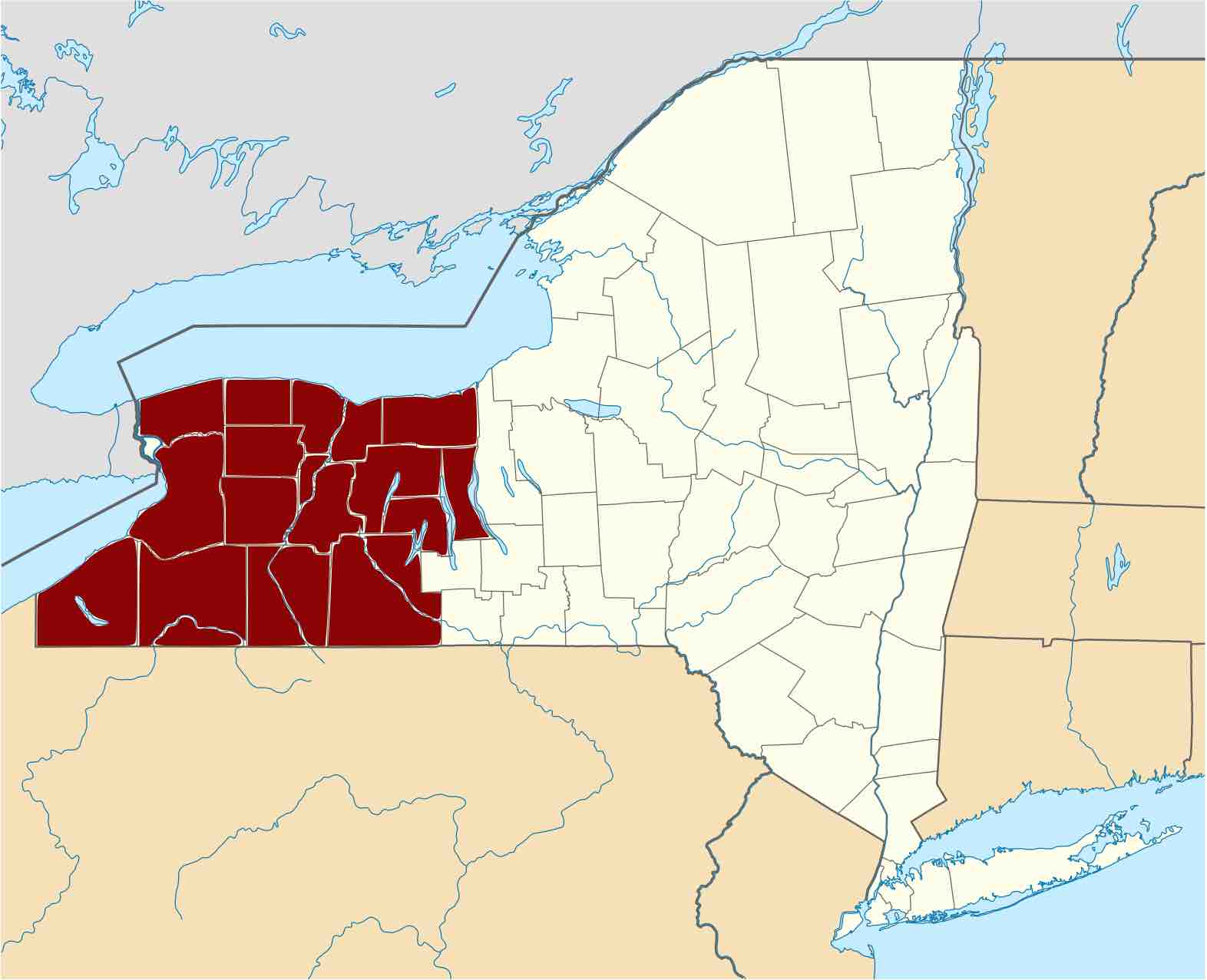The "Burned-Over District" refers to the religious scene in early nineteenth-century western and central New York, where religious revivals and Pentecostal movements of the Second Great Awakening took place. The term was coined in 1876 by Charles Grandison Finney, who argued that the area had been so heavily evangelized as to have no "fuel" (unconverted population) left over to "burn" (convert).

Map of the "Burned-Over District"
The "Burned-Over District" of upstate New York, covering an area from approximately Buffalo to the eastern shores of Lake Erie.
Charles Finney
Charles Grandison Finney (August 29, 1792–August 16, 1875) was a leader in the Second Great Awakening and has been called "The Father of Modern Revivalism." Finney was an innovative revivalist, an opponent of Old School Presbyterian theology, an advocate of Christian Perfectionism, a pioneer in social reforms in favor of women and African Americans, a religious writer, and president at Oberlin College.
Born in 1792 in western New York, Finney studied to be a lawyer until 1821, when he experienced a religious conversion and thereafter devoted himself to revivals. He led revival meetings in New York and Pennsylvania, but his greatest success occurred after he accepted a ministry in Rochester, New York, in 1830. At the time, Rochester was a boomtown because the Erie Canal had brought a lively shipping business.
The new middle class—an outgrowth of the Industrial Revolution—embraced Finney’s message. It fit perfectly with their understanding of themselves as people shaping their own destiny. Workers also latched onto the message that they, too, could control their salvation, spiritually and perhaps financially. Intense flames of religious fervor swept the area of western New York during this time, in large part due to Finney's work.
Religious Movements in Western New York
Western New York still had a frontier quality at the time, making professional and established clergy scarce. This contributed to the piety of the area and many of the self-taught qualities found in folk religion. Besides producing many mainline Protestant converts, especially in nonconformist sects, the area spawned a number of innovative religious movements, all founded by laypeople during the early nineteenth century.
Joseph Smith, Jr., founded the Latter Day Saint movement, which later gave rise to Mormonism. The Fox sisters conducted some of the first table-rapping seances and helped inspire Spiritualism. The first communal Shaker farm was established in this area of New York during this period. William Miller and his followers, called Millerites, believed that the Second Coming would occur on October 22, 1844. Miller is credited with beginning the religious movement now known as "Adventism," and several major religious denominations are his direct spiritual heirs, such as Seventh-day Adventists and Advent Christians.